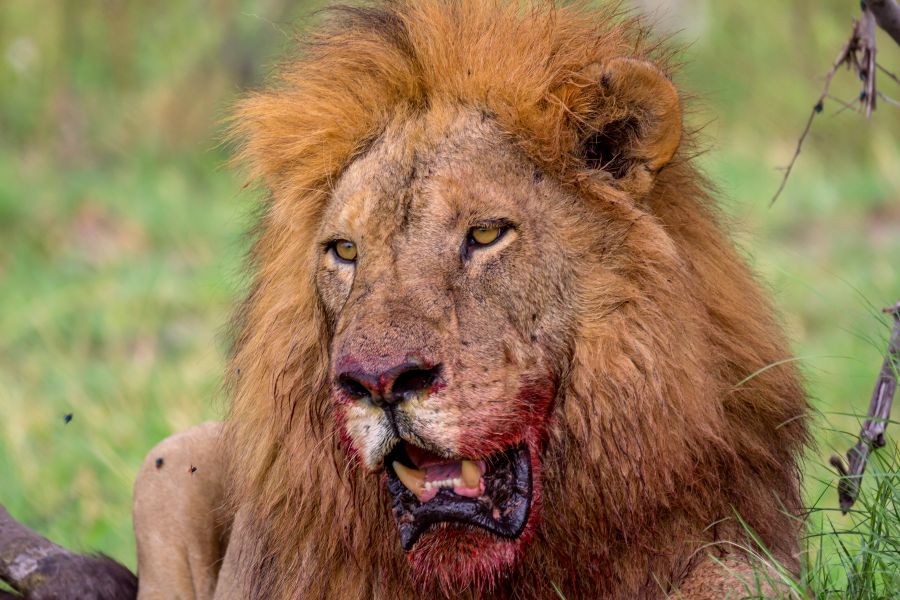Zimbabwe remains one of the most popular African game hunting destinations, offering hunters an array of species, conditions, challenges, and rewards to ensure a memorable African safari. Discover more about this diverse destination and all the gems it offers hunters.
[DYNAMIC-BLOGTABLEOFCONTENT]
Key Takeaways
- Zimbabwe hunting safaris occur throughout the year, with the cooler winter months being the more popular and peak times to enjoy an African hunt.
- Zimbabwe offers hunters a wide array of species, including dangerous game and African plains game, challenging conditions, and immense rewards with exceptional trophies, making it a sought-after hunting location.
- Dangerous game hunting started back in the 1800s in Africa with the influx of European settlers in the region.
- Dangerous game options are diverse, with four of Africa’s Big 5 being hunted in Zimbabwe. The elephant, lion, leopard, Cape buffalo, Nile crocodile, and hippo are available when safari hunting in Zimbabwe.
- The rhino is the only member of Africa’s Big 5 and Dangerous 7 not available to hunt.
- Zimbabwe hunting safaris offer a true reflection of Africa of old, with many concessions being largely unfenced.
The Origins of Dangerous Game Hunting in Africa
- Dangerous game hunting in Africa began in the 19th century as the region’s European colonization led to European settlers hunting animals for sport and trophies.
- Dangerous game hunting was linked to class privilege, with professional hunters (also referred to as “white” hunters) leading large African safaris for privileged and wealthy individuals looking for an unusual and dangerous hunting adventure.
- The 1900s saw Africa growing in popularity as a destination in which to enjoy thrilling hunting safaris, with popular public figures such as Lord Delamere and his hunting safaris in Kenya playing a large role in popularizing hunting and more especially, dangerous game hunting in Africa.
- Theodore Roosevelt’s 1910 African hunt added to hunting in Africa being seen as an honorable and prestigious sporting pursuit.
- The 21st century sees numerous African destinations still targeting dangerous game, with hunters eagerly hunting these species to add to their trophy rooms.
- Africa’s Big 5 are seen as being the most dangerous to hunt on foot and include the elephant, lion, leopard, Cape buffalo, and rhino. Other popular dangerous game includes the last two members of the Dangerous 7, namely the Nile crocodile and hippo.
- Strict rules and regulations govern the hunting of Africa’s Big Five, with regulations varying by country and species. For example, the rhino is only available to hunt in South Africa and Namibia.
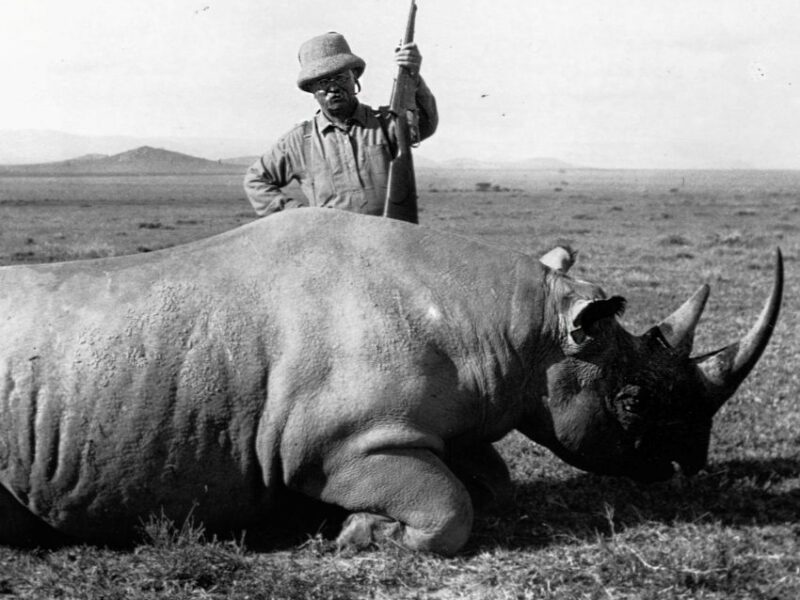
What Dangerous Game can be Hunted in Zimbabwe?
Zimbabwe is alive with dangerous game hunting options, including four of Africa’s Big 5, namely the elephant, lion, leopard, and Cape buffalo. The rhino is not available when hunting in Zimbabwe. Adding to the list of dangerous game in the area are the two remaining members of the Dangerous 7, namely the hippo and the Nile crocodile.
Permits when Hunting Dangerous Game on a Zimbabwe Hunting Safari
When hunting dangerous game, the following permits are required:
T2 Form
- This is a hunting permit and is required for all game hunting in the country.
- It is issued by the Zimbabwe Parks and Wildlife Management Authority (ZPWMA) for a cost of US$5
Special Permits
- CITES / TOPS permits that are required for hippo, crocodile, lion, leopard, and elephant hunts.
- Your African outfitter will apply and sort on your behalf.
Dangerous Game Hunting in Zimbabwe: Where To Go & What To Target
Zimbabwe remains one of Africa’s premier dangerous game hunting destinations. Let’s take a close look at the regions, species, and challenges that hunters face when enjoying hunting safaris in Zimbabwe.
Hwange National Park and Surrounding Concessions
This park is around 5656 square miles and is surrounded by buffer zones that are utilized for hunting activities. The terrain comprises savanna, woodlands, and grasslands, together with seasonal water holes that attract the animals during dry periods.
Notable species in the region include an array of dangerous game, including elephant, leopard, and lion, as well as numerous species of African plains game. The area is renowned for its large elephant herds, making it a prime destination for elephant hunting. Animals leaving Hwange National Park and entering these buffer zones are targeted and hunted, mainly using walk-and-stalk hunting methods.
Zambezi Valley Concessions
The Zambezi Valley concessions in Zimbabwe are large, with the bigger concessions spanning millions of acres and including diverse protected zones:
Omay Concession Area:
- 2 million acres, including 200 km of prime Zambezi River shoreline.
- This area is renowned for its unfenced dangerous game hunts, including leopard, lion, Cape buffalo, and elephant, as well as the two semi-aquatic members of the Dangerous 7, namely the hippo and Nile crocodile.
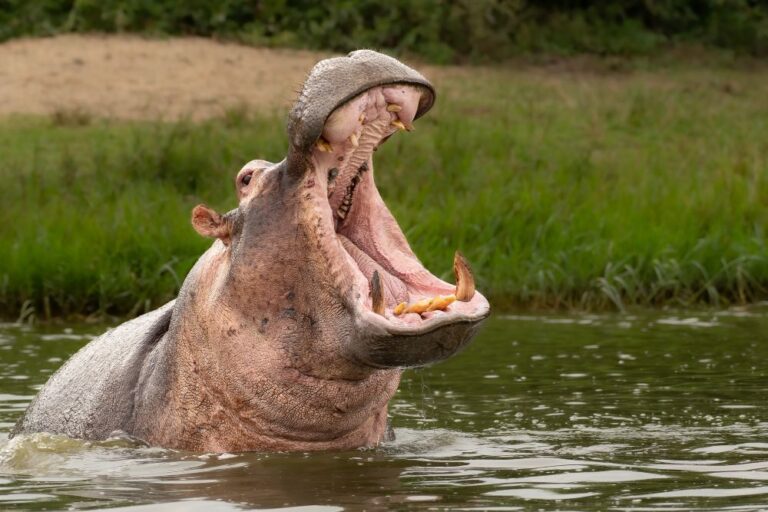
The Dande Concession
- Total Area: +-500,000 acres
- This concession includes some major river frontage, allowing for the hunting of both hippos and Nile crocodiles.
- Hunts take place on foot, with fair chase being the name of the game, as well as the targeting of mature adult animals.
The Chewore Safari Area
- This is the largest protected area within the Zambezi Valley, clocking in at around 1308 square miles. It features more than 30 miles of Zambezi River frontage, with abundant game available to hunt.
- The area is alive with dangerous game species, including trophy-sized crocodiles, large hippo bulls, exceptional leopard trophies, large elephant bulls, Cape buffalo “dagga boys,” and lions that are perfect for tracking through the large areas of Zimbabwean wilderness.
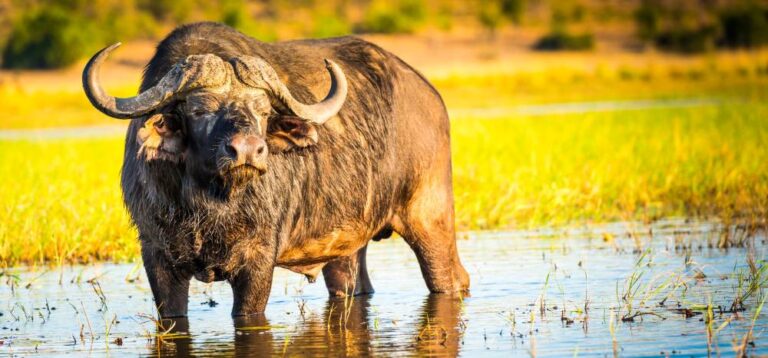
The Hurungwe Safari Area
- This forms an area around 1118 square miles and is part of the Zambezi Valley Ecosystem, with terrain that ranges from rugged escarpment to floodplains.
- The region is known for its rich biodiversity and includes elephant, leopard, hippo, and crocodile trophies.
- Lake Kariba and the Zambezi River are ideal for hunting in Zimbabwe, targeting the aquatic members of the Dangerous 7, namely the hippo and Nile crocodile.
Gonarezhou National Park Region
This remote region features exceptional free-range game hunting safaris, with large trophy Cape buffalo, elephant, and leopard trophies available. Covering an area of about 1,950 square miles and forming part of the Great Limpopo Transfrontier Park, the region is known for its diverse combination of terrain, including rugged and rocky hills, savannas, and forests.
Matetsti Safari Region
This area is renowned for its unfenced hunts, with prime species targeted, including lion, leopard, Cape buffalo and elephant as well as abundant African plains game species.
The Matetsi Safari region is located near Victoria Falls and comprises huge areas of unfenced hunting grounds adjacent to Hwange National Park. The open savannas and mopane forests provide a diverse habitat for the large number of animals that migrate from the park into the Matsetsi Safari region.
The Bubye Valley Conservancy
This is a private conservancy of roughly 1158 square miles.
This area includes diverse habitats with well-managed game and remains a great option for targeting leopard, Cape buffalo, lion, and elephant, as well as abundant Africa plains game species.
Tourism Activities in Zimbabwe
After an enthralling, dangerous game hunting adventure, it’s good to know that there are numerous tourist activities to enjoy in the region. Take the time to relax, unwind, and enjoy all the beauty that Zimbabwe has to offer. The destination offers excellent guides and year-round activities.
Some tourism highlights include:
- A visit to Victoria Falls, also known by locals as “The Smoke that Thunders,” is something well worth experiencing! This majestic waterfall stands a whopping 354 feet high and is a UNESCO World Heritage Site. It also forms part of the Seven Wonders of the World.
- Enjoy some action-adventures ranging from white-water rafting and bungee jumping to helicopter tours in the Victoria Falls region.
- For those interested in culture, be sure to check out the Great Zimbabwe Ruins, a UNESCO World Heritage Site.
- Lose yourself in the local markets, with two notable options, including Harare’s Mbare Muskia market and Bulawayo’s Craft Market. From curios and handcrafts to delectable local cuisine, don’t miss out!
- Sit back, relax, and enjoy game watching at any of the many national parks in the region. With expert guides, abundant wildlife, and great photo opportunities, you will be spoilt for choice!
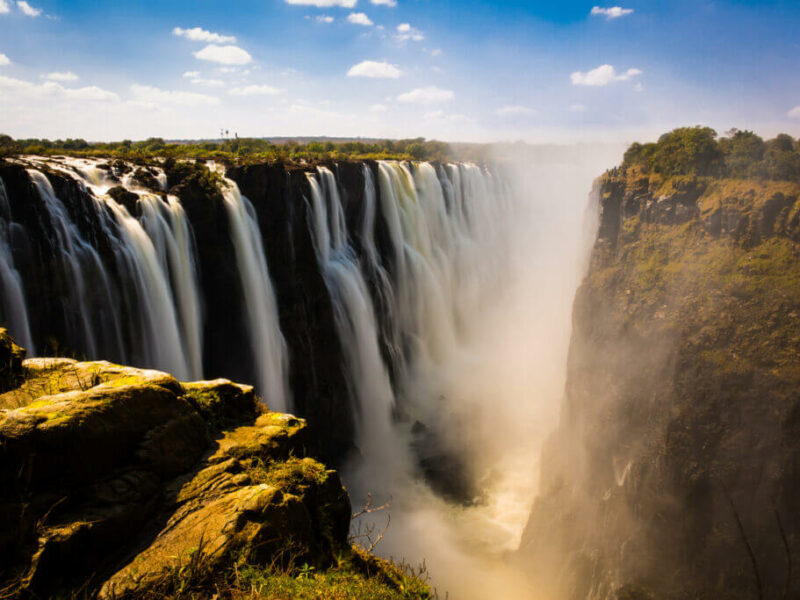
Frequently Asked Questions
Is hunting legal in Zimbabwe?
Yes, hunting in Zimbabwe is legal, but relevant hunting licenses do need to be issued.
When is Zimbabwe’s hunting season?
Hunting safaris in Zimbabwe happen throughout the year, but the cooler, drier winter months from around May to September are the peak hunting months in the region.
What caliber rifle is required for dangerous game hunting in Zimbabwe?
Dangerous game hunting requires a minimum of a .375.
How do I obtain a hunting license for Zimbabwe?
A TR2 form, otherwise known as a hunting permit, must be stamped and issued by the Zimbabwe Parks and Wildlife Management Authority (ZPWMA) and issued to each hunter. The current cost for the TR2 form to be issued is around $5.
Can you hunt the Big 5 on a hunting safari in Zimbabwe?
Africa’s Big 5 consist of the elephant, rhino, Cape buffalo, lion, and leopard, all of which are a challenge to hunt on a dangerous game hunting safari. Zimbabwe allows the targeting of four of Africa’s Big 5, with the rhino not being available to hunt in Zimbabwe. Rhino hunting is only legal in South Africa and Namibia.
Are hounds used on leopard hunts in Zimbabwe?
Yes, in some areas, dogs or hounds are often used to flush the leopard out in the bush or corner and keep it contained.
When is the best time of the year to enjoy dangerous game hunting in Zimbabwe?
Dangerous game hunting is best enjoyed during the dry winter months when animals are more active and there is less foliage, which makes tracking these species simpler. For dangerous game such as the hippo and crocodile, the access to prime hunting grounds like Lake Kariba and the Zambezi River is also easier.
Can you export your dangerous game hunting trophies from Zimbabwe to the US?
Yes, dangerous game hunting trophies harvested in Zimbabwe can be exported to the US, but some strict regulations and permits need to be adhered to and obtained.
Conclusion
Zimbabwe isn’t just a destination—it’s a legacy for seasoned hunters seeking true African adventure. With its vast wilderness, trophy-quality game, and seasoned professional guides, Zimbabwe offers a rare opportunity to experience high-adrenaline safaris in their purest form.
Ready to make your mark? Explore two of our most sought-after Zimbabwean hunts:
-
Embark on the 6-night Trophy Hippo Hunting Safari on Lake Kariba, where you’ll track one of Africa’s most formidable animals in a stunning, water-based ecosystem. This package includes lakeside lodging, expert PH support, and full trophy preparation.
→ Explore the Hippo Hunt -
Take on the challenge of a 14-day Leopard Hunt in Matetsi Unit 2, one of Zimbabwe’s most prestigious hunting blocks. This full-package expedition combines luxury bush camps, expert tracking teams, and high-success outcomes in Big Cat territory.
→ View the Leopard Safari
Whichever path you choose, you’re not just booking a hunt—you’re entering the ranks of those who’ve walked Africa’s wild edge and come back with stories etched in legend.
